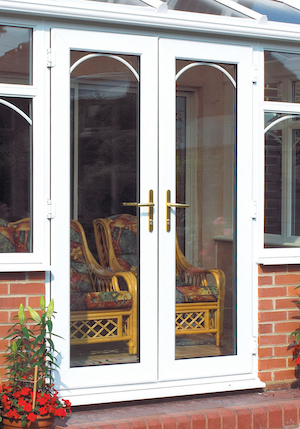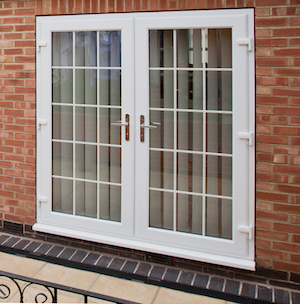Why Nobody Cares About French Door Seal Replacement
페이지 정보
작성자작성자 Patty 작성일날짜 24-12-29 02:10 조회3회본문
 French Door Seal replacement french doors
French Door Seal replacement french doorsThe replacement french door of upvc french door lock replacement door seals helps regulate the air inside your home, and also reduces energy costs. This simple DIY project can be completed in just an hour.
Tubular and V-strip seals work as air barriers, usually placed in grooves that are milled at the base of a window or door sash, or between a frame and a door. These seals are self-sticking, and installation is faster.
Selecting the Best Weatherstrip Seal
Over time, wear and tear, as well as everyday use can cause the seals around your doors to weaken. This will cause exterior air to escape, which can lead to more expensive heating and cooling costs and a loss in the comfort of your home. Weather stripping stops snow, rain and outside noises from entering, and also prevents costly leakage of heated air or cool air.
There are many kinds of weatherstripping available. Certain types of weather stripping are more durable while others are simpler to install. The type of weatherstripping you choose will depend on your individual requirements.
Felt weatherstrip is the most common and cheapest alternative. It is usually nailed or glued to the jamb. Once the door is closed, it compresses the material, forming the appearance of a seal. Felt is best for use in dry weather, since it isn't able to stand up to moisture.
Foam tape is composed of closed-cell or open-cell foam, and has an adhesive back. It is available in various sizes and thicknesses, making it ideal for filling small gaps. It is easily cut to size, and installed along the top or inside corners of the window frame.
Rubber foam weatherstrips are a long-lasting alternative to foam tape. It is usually attached to the door frame or jamb by means of adhesive and is simple to install. It comes in a variety of widths, and can be cut to fit larger gaps.
Door sweeps are flat pieces made from stainless steel, plastic or aluminum that feature the appearance of a seal made by a brush. They can be used to prevent drafts or accumulation of snow at the bottom of the door or at its hinge.
The push-on seals (also called "C-clip seals") are designed to be pushed over the lip. They are made of a metal core that is fully covered in rubber to protect against corrosion. They are designed to minimize drafts, stop leaks, and make closing and opening doors easier.
The specific vehicle's make, model and year are typically used to determine the automotive weatherstripping. This can be both convenient but also frustrating, as you might have trouble finding the exact weatherstripping you need for your vehicle because it is often sold out.
Eliminating the old Weatherstrip
A weatherstrip that is damaged or missing can lead to air infiltration, energy losses and pest infestations. While minor tears and damage may be repaired using sealants or patches but a full repair is typically needed for more serious damage. Door weatherstrip is an important home maintenance item, and replacing french doors with Windows (https://telegra.ph/13-things-you-should-know-about-replace-Window-with-french-doors-that-you-might-not-have-known-09-06) it can enhance the comfort energy efficiency and value of your home.
Whether your existing weatherstrip is made of vinyl, rubber or steel, it's important to remove the old weatherstrip carefully prior to beginning the process of installing it. This will ensure that the new weatherstrip adheres to the door frame properly and doesn't create any gaps that could let drafts or moisture in.
Start by taking out the screws or nails that hold the old weatherstrip to the door frame. Then remove it from both sides. Clean the area thoroughly so that there is no residue left in the area that could hinder the bonding of the new seal to the door frame. It is also important to consider how to dispose of the old weatherstrip seal, since some regions have specific rules for its disposal.
Once the old weatherstrip has been removed, you can take measurements of the new material. Make sure you measure precisely just a few millimeters could result in an improperly fitting weatherstrip seal. Measure using a tape measure and remember to "measure twice, then cut once".
Close your doors and windows to ensure there are no gaps before you buy any new weatherstrip. Also, ensure that your hinges are securely fastened, since a door that is not aligned properly could result in gaps between the weatherstrip and doorframe.
It's time to purchase and prepare the materials. Find the weatherstrip that is compatible with the door frame you have, and then follow the manufacturer's directions for the best way to cut it. Some vinyl and rubber weatherstrips can be cut with shears or utility knives while metal ones should be cut with tinsnips.
Cutting the New Weatherstrip
A properly functioning door weatherstrip seal can help maintain indoor temperatures, eliminate drafts, and increase comfort and energy efficiency. This crucial home improvement may become damaged or worn out over time when used for a long period of time. To keep your doors working correctly, regular inspections and proper maintenance is recommended.
Whether you are replacing worn-out weather stripping or adding it to an uninsulated doorframe, choosing the right type is essential. There are a variety of weatherstripping available. Each has distinct advantages and disadvantages. Foam tape is a popular choice because it is easy to install and cut. It is available in different sizes and is made from open-cell foam, EPDM rubber or both. Foam seals are also ideal for the top and the bottom of window sashes and they can be cut to the dimensions of.
Pile weatherstripping, on the other hand, has a polypyrene-type plastic base with fine brush hair. It is designed to fit in a small channel that runs through the lock stile or hinge stile on your door. To prevent it from slipping out, the installer generally attaches this kind of weather stripping with a screw driver as well as a hammer. Over time, the stakes may become loose or fall away which allows the weather stripping beneath your door to slide.
When buying a new pile of weatherstrips to prevent this from happening, be sure to choose the right base width and consider adhesive-backed options. This will save you from having to stake your new weatherstrip down, and ensure that it is securely fixed.
Before starting the work, ensure that the area surrounding your french door is clean and free of debris and traces of the old weather stripping. This will ensure that your new seal has an excellent bond to the doorframe and can create an effective barrier against drafts. Also, take precise measurements of the groove where the old weatherstrip was located; this will help ensure that your new seal is correctly fitted.
Installing the Weatherstrip
A properly functioning door weather strip seal creates an airtight barrier to moisture and air. This protects your walls, doors, frames, and other parts from damage. It also helps reduce energy consumption and cost by preventing drafts. Replacing a worn or damaged weather strip seal is a relatively simple DIY project that's worth the effort to stop expensive energy losses and increase indoor comfort.
Clean the area where you plan to put up your new weatherstrip. Get rid of any dust, dirt or other residue from the frame using a towel or brush. This could affect the bonding between the adhesive and your new weather stripping.
Once the area is clean and dry, you can decide the type of weather stripping you'll need. There are a variety of options to choose from, ranging from simple and inexpensive self-adhesive foam tape to tough and durable rubber gasket weather strips. Some are placed in milled grooves at the base of a window or door, while others like tubular vinyl or reinforced silicone are attached to a metal or wooden strip that can be screwed or nailed into place.
Take into consideration durability, longevity, and ease of installation when choosing a type. Adhesive-backed weather stripping is simple to install, but certain kinds, like interlocking weather stripping for metal may require some expertise and skill.
Once you've chosen a type, carefully measure and cut it to the appropriate length. Remember the old adage "Measure twice cut once, measure twice." This will ensure that your new weather stripping is precisely sized and will fit the groove correctly.
Check your weatherstrip prior to installing it. Close the door and check for a tight seal. If it's difficult to close or has gaps that the weather stripping could be too thick or the measurements might have been off. If this is the case, you can trim it to the appropriate size or reapply it for the best fit.
 Once you've finished it's crucial to wait for 24 hours before closing the trunk lid or opening the door. If you close them while the adhesive is wet, the weatherstrip can fall off the newly glued surface and allow water or other elements to enter your home.
Once you've finished it's crucial to wait for 24 hours before closing the trunk lid or opening the door. If you close them while the adhesive is wet, the weatherstrip can fall off the newly glued surface and allow water or other elements to enter your home.
